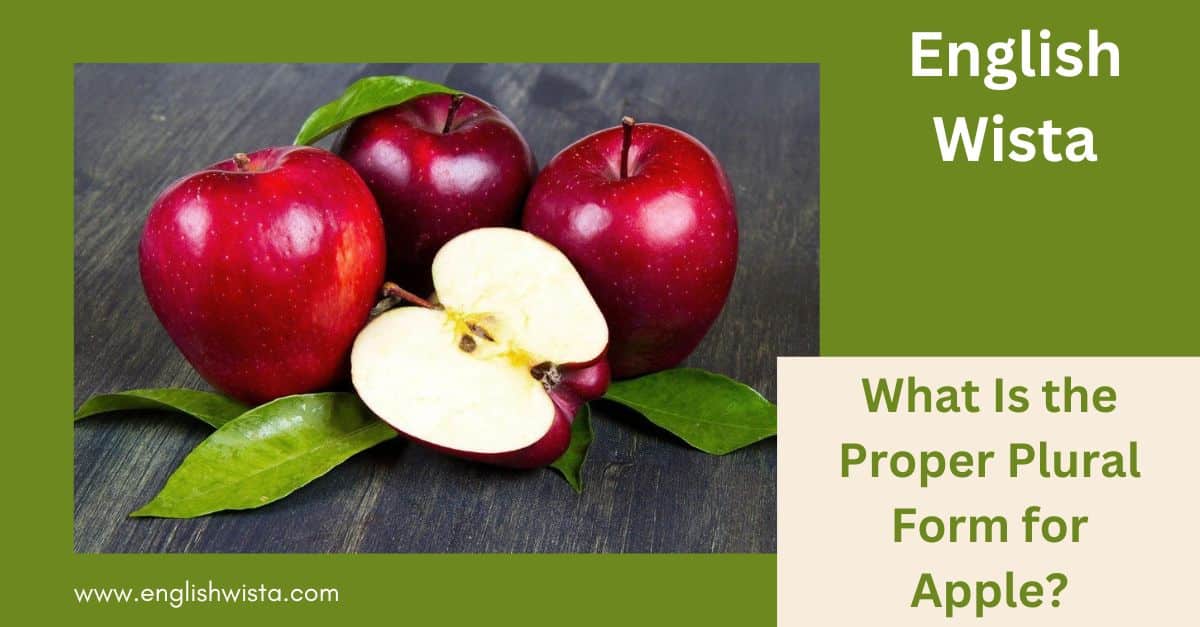The plural of “apple” is a simple concept, yet it opens up a world of delicious possibilities! Whether you’re planning a trip to the orchard or whipping up a fruit salad, knowing how to use this word correctly enhances your language skills and boosts your confidence.
But there’s more to apples than just grammar! Dive into the juicy history, fun facts, and culinary uses of this beloved fruit. You’ll discover why apples have been a symbol of knowledge and temptation throughout the ages. Ready to explore? Let’s get started!
What Is the Plural of “Apple”?
The plural of “apple” is “apples.” It’s as simple as adding an “-s” to the end of the word. In English, this is the standard way to make most singular nouns plural. For example:
- One apple → Two apples
- An apple a day keeps the doctor away, but a basket of apples makes a great gift!
So, whenever you’re talking about more than one apple, just add that little “-s” to make it plural.
Why Is It “Apples” and Not Something Else?
You might be curious about why we simply add “-s” to make “apple” plural. This rule is part of the English language’s grammar system. Most nouns follow this pattern, making it straightforward and easy to remember. There are exceptions (like “mouse” becoming “mice”), but “apple” isn’t one of them. Lucky us, right?
How Do We Use “Apples” in Sentences?
To make things even clearer, let’s look at some real-life examples of “apples” in action:
- I bought a bag of apples at the farmer’s market.
- The apples on the tree are ripe and ready to pick.
- She used apples to bake a delicious pie for the party.
- Apples are not only tasty but also very nutritious.
Notice how “apples” works perfectly to describe more than one apple in these sentences? It’s simple and effective.
Is “Apple” Singular or Plural?
The word “apple” is singular. It refers to just one piece of fruit. For example:
- There’s an apple on the table.
- Would you like an apple with your lunch?
Whenever you’re talking about just one apple, use the singular form: “apple.”
What About Collective Nouns?
Here’s a fun twist: sometimes, we use collective nouns to describe a group of apples. For example:
- A bushel of apples
- A basket of apples
These phrases don’t change the word “apples,” but they add a sense of quantity. Isn’t language fascinating?
Why Does This Matter?
Understanding the plural form of “apple” helps you communicate clearly and correctly. Whether you’re learning English or teaching it, knowing when to use “apple” and “apples” can make a big difference. Plus, it’s always good to feel confident in your language skills.
What Are Some Common Mistakes?
Let’s address a few errors people sometimes make when using “apple” and “apples”:
- Forgetting to Add the “-s”: Saying “I bought three apple” instead of “three apples.”
- Overcomplicating It: Trying to use irregular plural forms like “apple’s” or “applii.” (No need for that!)
- Mixing Singular and Plural: Saying “An apples” instead of “An apple” or “Some apples.”
To avoid these mistakes, just remember the golden rule: add “-s” for more than one apple.
How Does “Apple” Compare to Other Plural Nouns?
Let’s compare “apple” to a few other nouns to see how the plural form works:
- Regular Nouns: Like “apple,” most nouns simply add “-s.” For example:
- One car → Two cars
- One dog → Three dogs
- Irregular Nouns: Some words change entirely when pluralized:
- One child → Two children
- One tooth → Several teeth
Isn’t it nice that “apple” is straightforward? No tricky rules or exceptions here!
Fun Facts About the Word “Apple”
Here are some interesting tidbits to make your learning even more fun:
- Word Origin: The word “apple” comes from the Old English word “æppel,” which has roots in Germanic languages.
- Collective Noun Fun: Did you know a group of apple trees is called an orchard?
- Symbolism: Apples have been symbols of knowledge, temptation, and health throughout history.
Learning about words can be just as fascinating as learning how to use them!
Quick Tips for Remembering Plural Rules
- For most nouns, just add “-s” to make them plural.
- Watch out for irregular nouns that don’t follow this rule.
- Practice with real-life examples to reinforce your understanding.
Conclusion: Apples Are Easy!
So, there you have it. The proper plural form of “apple” is “apples.” It’s a simple rule that fits neatly into English grammar, making it easy to remember and use. Whether you’re writing, speaking, or just enjoying a tasty snack, you’ll now feel confident using this word correctly. Language can be fun and straightforward when we break it down like this. Keep learning and enjoy the journey—one word (or apple) at a time!



